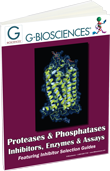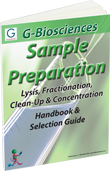 Proteins are highly heterogeneous, complex bio macromolecules consisting of one or more long chains of amino acids. Proteins or peptides fold up to form secondary and tertiary structures, and associate with other protein subunits to form quaternary structures. Proteins are structurally and functionally different from each other and require distinct surrounding environment for their stability and activity. Proteins are susceptible to degradation, denaturation and precipitation when taken out of their native environment.
Proteins are highly heterogeneous, complex bio macromolecules consisting of one or more long chains of amino acids. Proteins or peptides fold up to form secondary and tertiary structures, and associate with other protein subunits to form quaternary structures. Proteins are structurally and functionally different from each other and require distinct surrounding environment for their stability and activity. Proteins are susceptible to degradation, denaturation and precipitation when taken out of their native environment.
During protein extraction, the cells and organelle membranes are disrupted to release the proteins into the solution making proteins highly unstable. Proteins are exposed to different pH, ionic strengths, temperature and proteases in solution. Although all proteins are different and require different parameters for stability, solubility and activity, nevertheless some factors if taken care can ensure maximum extraction of active proteins. Components or factors that protect proteins during protein extraction are:
Buffering component: It is important that during extraction proteins are provided with well buffered environment so that they can cope up with sudden changes in pH. If the protein extraction lysis solution is not well buffered then proteins can easily and irreversibly denature.
A good protein extraction buffer must have high buffering capacity at desired pH, water solubility, chemical stability, compatibility with other additives added to the protein extraction solution, and compatibility with downstream applications of proteins.
Most commonly used biological buffers have pKa near 7 and thus can be used at physiological pH. The most commonly used biological buffers are phosphate, Tris, MOPS and HEPES. These buffers are usually used above 20 mM concentration to ensure sufficient buffering capacity.
Temperature at which extraction is carried out: Proteins from mammalian cells have optimum temperature for their activity at around 37 °C and many bacterial proteins derived from bacteria grown at 37°C also have optimum temperature for stability of proteins around 37°C. Considering this, one would expect that protein extraction to be successful at room temperature. However proteins in solution are degraded at room temperature as the environment for proteins in solution is different from the environment in cells. In solution proteins are not protected by chaperones as in cell. In addition they are susceptible to degradation by endogenous proteases present in protein solution. The endogenous proteases in cells are present in specific compartment and thus cannot degrade all cellular proteins. The activity of proteases is reduced at 4°C and it has been found in general that extraction of protein should be carried out on ice to obtain active proteins.
Additives to the cell lysis and protein extraction buffer: There are several additives added to the protein extraction buffers some general and some specific related to protein that need to be extracted.
- Salts: Salts are added to maintain the ionic strength of the protein extraction solution. The concentration of salt to be added in extraction buffer is based upon ionic strength of the physiological environment of the proteins. Too high or too low concentration of salts can precipitate or denature the protein. Most commonly used salts for maintaining ionic strength of protein extraction buffer are sodium chloride, potassium chloride or ammonium sulfate
- Proteases/peptidases: Proteases and peptidases are enzymes that cleave the proteins at specific site and degrade them. There are four known classes of proteases including serine proteases, cysteine proteases, aspartic proteases and metallo proteases. When proteins other than proteases needs to be extracted protease inhibitors can be added to prevent degradation of proteins. Specific protease inhibitors and mixture of protease inhibitors are available commercially depending upon need of the researcher. It is good to use mixture of protease inhibitors when there is limited knowledge as what proteases are endogenously present in the cells. Metallo proteases are inhibited by metal chelators such as EDTA and EGTA. Most commonly used protease inhibitors are EDTA, PMSF, Leupeptin and pepstatin A.
- Osmolytes: Osmolytes are compounds that affect osmosis. Osmolytes are also known to aid protein folding. They are used as additives to enhance solubility and stability of the proteins in solutions. Most commonly used osmolytes during protein extraction are glycerol, detergents such as NP40 and sugars such as glucose, sucrose etc.
- Reducing agents: Reducing agents protect proteins against oxidative damage. They are used when extraction of specific proteins that are prone to oxidative damage is desired. Examples of reducing agents include 2-mercaptoethanol, DTT etc.









